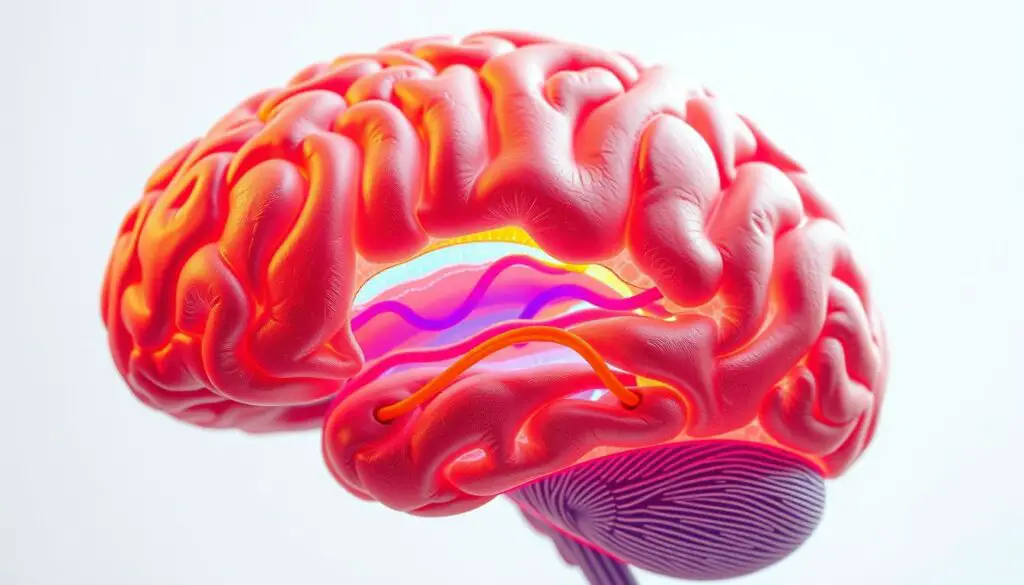
Feeling stuck and wanting to change your life? Transforming your life begins with life-changing habits. These habits can help you reach your goals.
The journey of habit formation is essential for lasting changes. A simple, step-by-step roadmap can help you create positive habits. These habits will unlock your full capacity.
This article will show you how to build habits that change your life. You’ll learn to make a clear plan, face challenges, and keep your new habits. It’s all about making lasting changes through habit formation.
What is the most effective way to build positive habits?
Start small and be consistent to build positive habits. Create an environment that supports your desired behaviors. Begin with simple habits and gradually increase their intensity for lasting change.
Key Takeaways
- Understand the importance of having a roadmap for achieving life-changing habits
- Learn how to create a step-by-step plan for building positive habits
- Discover strategies for overcoming obstacles and maintaining new habits
- Gain insights into the process of habit formation and its impact on your life
- Develop a clear understanding of how to make lasting changes through habit formation
The Science Behind Successful Habit Formation

To build lasting habits, it’s key to know how they form in your brain. Habit formation is a complex process that involves both neurological and psychological factors. By understanding these mechanisms, you can create positive habits that last.
How Habits Form in Your Brain
Habits are automatic responses to specific cues, developed through repetition and reinforcement. When you do a task often, your brain makes a pathway for it. As neuroscientist Dr. Charles Duhigg explains, “Habits are the brain’s way of conserving energy by automating repetitive tasks.”
The process starts with a cue that triggers the habit, followed by a routine (the behavior itself), and ends with a reward. This reward reinforces the behavior. Knowing this process is key to changing or creating new habits.
The Habit Loop: Cue, Routine, Reward
The habit loop is a key concept in understanding habit formation. It has three parts:
- Cue: A trigger or prompt that sets off the habit.
- Routine: The behavior or action taken in response to the cue.
- Reward: The payoff or benefit gained from performing the behavior.
By identifying and manipulating these components, you can change existing habits or form new ones. For example, to start exercising regularly, set a cue (e.g., waking up at 7 AM), perform the routine (e.g., going for a jog), and reward yourself (e.g., enjoying a healthy breakfast).
“The key to exercising regularly is not motivation, but creating an environment where it becomes a habit.”
Neuroplasticity and Behavior Change
Neuroplasticity is the brain’s ability to reorganize itself by forming new neural connections. This ability is key for habit formation and behavior change. As you repeat a behavior, your brain adapts by strengthening the associated neural pathways, making the behavior more automatic over time.
By understanding neuroplasticity, you can use its power to create positive habits. Start with small, manageable behaviors and gradually build upon them. This way, you can leverage the brain’s ability to adapt and change.
Why Most People Fail at Building Habits

Many struggle to build lasting habits because they don’t understand how habits work. It’s not just about starting a new routine. It’s about knowing how habits are created and kept.
Common Misconceptions About Habit Development
One big reason people fail is misconceptions about habit formation. They think habits are made by willpower or big changes right away. But, research proves that small, steady efforts work better.
- Believing that drastic changes are more effective than gradual ones
- Thinking that willpower is the key to habit formation
- Assuming that motivation alone can sustain long-term habits
Knowing these wrong ideas helps you build habits better. Realize that habits grow from small, steady actions. This sets you up for success.
The Role of Willpower and Its Limitations
Willpower is often seen as the main force behind habits. But, willpower is a limited resource that gets used up. Relying only on willpower can lead to burnout and failure.
Studies show willpower can grow with practice. But, it should be used wisely. It’s better to create an environment that supports your habits, making willpower less needed.
Unrealistic Expectations and Timeline Mistakes
Another big mistake is having unrealistic expectations about how fast habits form. Many expect quick results or think habits form in days. But, forming habits takes time.
| Habit Formation Stage | Typical Timeline | Common Challenges |
|---|---|---|
| Initial Adoption | 1-3 weeks | High motivation, but inconsistent practice |
| Habit Consolidation | 3-6 weeks | Motivation wanes, old habits resurface |
| Long-term Maintenance | Several months to years | Complacency, lack of tracking progress |
Knowing the typical time for habit formation helps. It also helps to be aware of common challenges. This way, you can set realistic goals and plan better.
Preparing Your Environment for Success

To build successful habits, you need to prepare your environment. Your surroundings greatly affect your ability to stick to new habits. By making your physical and digital spaces supportive, you boost your success chances.
Designing Your Physical Space for Positive Behaviors
Your physical space can either help or hinder your habits. Start by removing temptations that lead to bad habits. For example, remove TVs from bedrooms to reduce screen time.
Then, organize your space to make good habits easy. Create a cozy reading nook with good lighting and few distractions. This makes the desired behavior simple.
Eliminating Friction Points That Prevent Consistency
Friction points are obstacles that make habits hard. It’s key to identify and remove them for consistency. For instance, lay out your jogging clothes and shoes the night before for a morning jog.
Here’s a table with common friction points and how to overcome them:
| Friction Point | Strategy to Eliminate |
|---|---|
| Lack of preparation | Prepare everything needed the night before |
| Uncomfortable environment | Improve lighting, temperature, or seating |
| Distractions | Use tools or apps that block distracting websites or notifications |
Creating Habit-Friendly Digital Environments
In today’s digital world, your online space is as important as your physical one. Start by organizing your digital tools. For example, organize your writing software for a writing habit.
Then, use technology to your advantage with apps that support your habits. Apps like Freedom or SelfControl can block distracting websites. This helps you stay focused and on track.
The Power of Habit Stacking and Triggers
Habit stacking and triggers are great tools for building lasting habits. They help you add new habits to your daily routines. By using these strategies, you can make positive changes in your life.
Connecting New Habits to Existing Routines
To start habit stacking, pick a daily habit and add a new one to it. For example, brush your teeth in the morning and then floss. This method uses your current habits to help new ones stick.
Here are some examples of habit stacking:
- After waking up, meditate for 5 minutes.
- Right after breakfast, write in your journal for 10 minutes.
- Immediately after your morning exercise, drink a full glass of water.
Creating Effective Environmental Triggers
Environmental triggers are cues in your surroundings that remind you to do a habit. To make good triggers, find the right cues and link them to your habits.
For example, put a book on your nightstand to remind you to read before bed. The goal is to make the trigger obvious and linked to the action.
Implementation Intentions: The “When-Then” Formula
The “When-Then” formula is a strong way to start new habits. It tells you when to do a new habit and links it to a trigger or routine.
For example, “When I finish my morning coffee, then I will write for 30 minutes.” This makes your plan clear and ties the new habit to a cue, making it easier to stick to.
| Habit | Trigger | Action |
|---|---|---|
| Meditation | After waking up | Meditate for 5 minutes |
| Journaling | Right after breakfast | Write in journal for 10 minutes |
| Hydration | Immediately after morning exercise | Drink a full glass of water |
By using habit stacking, creating effective triggers, and the “When-Then” formula, you can make lasting changes. These methods help you build a strong system for changing your behavior. This makes it easier to reach your goals.
Starting Small: The Minimum Viable Habit Approach
Starting small is the first step to building lasting habits. This approach helps you create a strong base for success without feeling overwhelmed. It’s a simple yet powerful way to begin.
Why Micro-Habits Lead to Lasting Change
Micro-habits are small actions that can lead to big changes over time. They are easy to do and require little effort. This makes it easier to start new habits and stick to them.
For example, if you want to start reading, begin with just one page a day. This is easier than trying to read a whole chapter. It helps you build a reading habit that lasts.
Examples of Scalable Minimum Viable Habits
Minimum viable habits can improve many areas of your life. Here are a few examples:
- Exercise: Start with a 2-minute daily stretching routine.
- Healthy Eating: Begin by replacing one unhealthy snack with a healthy alternative each day.
- Productivity: Initiate a habit of writing down your tasks for the next day each evening.
These habits are designed to be small and easy to start. They help you build momentum slowly.
The Two-Minute Rule for Habit Initiation
The two-minute rule is a great way to start new habits. It says any habit can start if it takes less than two minutes. This rule makes starting new habits ridiculously easy.
| Habit | Two-Minute Version |
|---|---|
| Exercise regularly | Do 2 minutes of stretching |
| Write a journal | Write 1 sentence |
| Read more | Read 1 page |
By using the two-minute rule, you can turn big goals into small, easy habits. This makes starting new habits less scary and more doable.
Building Habits That Stick Through Identity Shifts
To make habits last, change how you see yourself to match your goals. This idea shows that habits reflect who you are. Changing them means changing how you see yourself.
The Role of Self-Perception in Behavior Change
Your view of yourself shapes your habits. Seeing yourself as someone with certain traits makes you act like that. For example, seeing yourself as fit leads to more exercise and healthy food.
Self-perception theory says you learn about yourself by watching your actions. So, acting out the habits you want to keep can change how you see yourself for the better.
Reframing Your Identity to Support New Habits
To start new habits, change your self-image to fit them. Say you want to read every day. Start by telling yourself, “I am a reader.”
Changing your identity can be done through:
- Positive self-talk
- Repeating affirmations
- Visualizing yourself doing the new habit well
Using Affirmations and Visualization Effectively
Affirmations and visualization are great for changing how you see yourself and building habits. Affirmations are positive sayings that help you believe in your new identity. Say, “I can reach my goals” or “I love to learn.”
Visualization is imagining yourself doing the new behavior or reaching your goals. Studies show it boosts motivation and performance.
“You don’t have to be great to start, but you have to start to be great.” – Zig Ziglar
To use affirmations and visualization well, follow these steps:
| Step | Affirmations | Visualization |
|---|---|---|
| 1 | Identify your desired identity or habit | Close your eyes and imagine yourself in a scenario where you’re performing the desired behavior |
| 2 | Create a positive statement that reflects this identity | Use all your senses to make the visualization vivid and real |
| 3 | Repeat the affirmation regularly, when you’re about to do the behavior | Repeat the visualization daily, at the same time each day |
By using affirmations and visualization, and being open to changing your identity, you can create lasting habits.
Tracking Progress: Measurement Systems That Work
To build lasting habits, tracking your progress is key. It helps you see your behavior patterns and find areas to improve. You can then make smart choices to better your routines.
Effective Habit Tracking Methods
There are many ways to track your habits, and what works best varies by person. Some popular methods include:
- Using a habit tracker app, such as Habitica or Loop Habit Tracker, to log your daily activities.
- Maintaining a habit journal to record your progress and reflect on your experiences.
- Creating a habit chart or calendar to visualize your progress.
Using Data to Optimize Your Routines
After starting to track your habits, you can use the data to improve your routines. Look at your data to:
- Find patterns and trends in your behavior.
- See which habits help you reach your goals.
- Change your routines to make them smoother and more productive.
By using data, you can fine-tune your habits and make small but significant improvements over time.
Avoiding Tracking Pitfalls and Obsessions
While tracking habits is vital, it’s also important to steer clear of common traps. Watch out for:
- Obsessive tracking: Don’t get too caught up in tracking every little thing, as it can cause burnout.
- Inaccurate data: Make sure your tracking method is reliable and accurate to avoid making wrong choices.
- Overemphasis on metrics: Remember, the goal is to build meaningful habits, not just to track numbers.
By knowing these common pitfalls, you can keep a healthy balance in tracking your habits. This way, you can stay focused on reaching your goals.
Overcoming Plateaus and Habit Relapse
The journey to lasting habits is not always easy. Knowing how to deal with plateaus is key. You might hit a wall or fall back into old ways as you go along.
Recognizing Warning Signs of Habit Breakdown
To beat plateaus and relapse, spot the warning signs early. Look out for:
- Missing habit sessions often
- Feeling unmotivated or out of touch with your goals
- Big changes in your routine or surroundings
Knowing these signs helps you act fast to stay on course.
Recovery Strategies After Missing Days
When you skip days, having a plan is vital. Don’t get stuck on the missed day. Just focus on getting back to your habit right away.
- Accept the setback and figure out why it happened
- Recommit to your goal
- Make a plan to avoid similar problems in the future
With a solid plan, you can bounce back quickly and keep moving forward.
The “Never Miss Twice” Principle
The “Never Miss Twice” rule is a strong recovery tactic. It stresses the need to get back on track right after a slip, so one mistake doesn’t lead to a long relapse.
Stay strong and don’t let one slip ruin your whole journey. This rule helps you stay on track and avoid falling back into old habits.
Social Accountability and Support Systems
Working on lasting habits is easier with social accountability. Having someone to report to boosts your motivation. It helps you stay on track with your goals.
Leveraging Social Pressure for Positive Change
Social pressure can be a great motivator. Share your goals with others to feel accountable. This doesn’t have to be public, just a trusted friend or family member.
Find an accountability partner who’s also building habits. This mutual support can give you the push you need on tough days.
Building a Habit-Supporting Community
Being around people who support your habits makes a big difference. A community can offer insights, tips, and motivation when you need it.
Look for online forums, social media groups, or local meetups for habit formation. Connecting with others who have similar goals can keep you inspired and committed.
When and How to Share Your Habit Goals
Choosing when and how to share your goals is key. Share with people you trust who will support you. Be clear about your goals and why you’re working on them.
Share your progress regularly with your support system. Use check-ins, progress reports, or a shared journal. Find a method that works for you and your supporters.
By using social accountability and building a supportive community, you can improve your chances of success. Remember, you’re not alone in your journey to form lasting habits.
Advanced Strategies for Building Habits in Different Life Areas
To make lasting changes, it’s key to develop advanced strategies for habit formation. This is true for different life areas like health, productivity, and relationships. Each area has its own challenges and opportunities.
Health and Fitness Habit Development
Building healthy habits is vital for your well-being. Here are some strategies to help:
- Start with small, achievable goals, such as taking a 10-minute walk each day.
- Use implementation intentions to link your habits to specific cues, like exercising immediately after waking up.
- Track your progress using a habit tracker or mobile app.
| Habit | Cue | Reward |
|---|---|---|
| Morning Exercise | Waking Up | Endorphin Boost |
| Healthy Eating | Meal Time | Satisfaction |
Productivity and Work Routine Optimization
Building habits that boost productivity is key for professional success. Here are some advanced strategies:
- Use the Pomodoro Technique to work in focused 25-minute increments, followed by a 5-minute break.
- Implement a “stop doing” list to eliminate non-essential tasks.
- Schedule regular breaks to recharge and avoid burnout.
Example of a Productivity Habit: Using a task management system to prioritize and organize your work.
Relationship and Personal Growth Habits
Building habits for positive relationships and personal growth is vital. Here are some strategies:
- Schedule regular check-ins with loved ones to maintain strong relationships.
- Practice active listening by focusing on the speaker and asking clarifying questions.
- Set aside time for self-reflection and journaling to promote personal growth.
By incorporating these advanced strategies into your daily routine, you can build habits that drive lasting change in various areas of your life.
Automating Your Life Through Established Routines
Creating routines can make your life more consistent and less cluttered. These systems work on autopilot, saving your mental energy for bigger tasks. This way, you can focus on what really matters.
Creating Daily Rituals That Reduce Decision Fatigue
Daily rituals are actions you do without thinking, saving mental energy. Start by picking daily tasks like brushing your teeth or taking a shower. Make these tasks automatic by doing them at the same time every day.
- Start your day with a consistent morning routine to feel positive.
- Have an evening routine to relax and get ready for sleep.
- Link new habits to your existing routines with if-then plans.
Balancing Structure and Flexibility in Your Routines
Structure is key for routines, but flexibility is also vital. Strike a balance by making your routines strong yet flexible.
- Identify your must-do routines.
- Be open to changes in your schedule for unexpected tasks.
- Regularly check and tweak your routines to keep them working well.
Technology Tools for Habit Automation
Technology can greatly help in automating habits and keeping routines consistent. There are many tools and apps to help streamline your routines and track your progress.
- Use apps like Habitica or Loop Habit Tracker to track your habits.
- Set reminders on your phone for specific tasks at certain times.
- Explore tools like Zapier or IFTTT to connect different apps and services.
By using these strategies, you can automate your life, reduce decision fatigue, and boost your efficiency.
Conclusion: Your Roadmap to Lifelong Positive Habits
Building positive habits is a lifelong journey that needs commitment and persistence. By understanding how habits work and using the strategies from this article, you can make a plan to reach your goals. This plan can change your life for the better.
Your path to lasting habits starts with small steps. Use techniques like habit stacking and create triggers to help you. Also, keep track of your progress. Remember, the secret to success is being consistent and never giving up.
Along the way, you’ll face challenges and setbacks. But knowing how to handle these can keep you moving forward. Your journey to positive habits is personal. By following the advice in this article, you can make a plan that fits your life and goals.
FAQ
What is the most effective way to build positive habits?
How do I overcome the limitations of willpower when building habits?
What is habit stacking, and how can I use it to build new habits?
How can I track my habits effectively?
What should I do when I experience a habit relapse?
How can I leverage social accountability to support my habit-building efforts?
What are some advanced strategies for building habits in different areas of my life?
How can I maintain consistency in my habits over time?
What is the role of identity shifts in building habits that stick?
How can I create a habit-supporting community to help me achieve my goals?
Frequently Asked Questions
- Q: What is the most effective way to build positive habits?
- A: Start small and be consistent to build positive habits. Create an environment that supports your desired behaviors. Begin with simple habits and gradually increase their intensity for lasting change.
- Q: What is habit stacking, and how can I use it to build new habits?
- A: Habit stacking involves adding new habits to existing routines. Find a habit you already do daily and add a new one to it. This creates a strong trigger for the new behavior.
- Q: How can I create a habit-supporting community to help me achieve my goals?
- A: Surround yourself with people who share your goals and values. Join online forums, attend meetups, or participate in social media groups. Connect with like-minded individuals for support and motivation.
Share :
You Might Also Like







